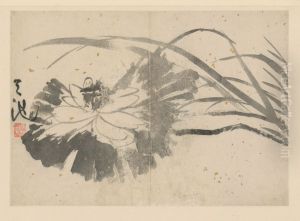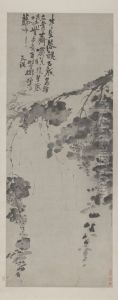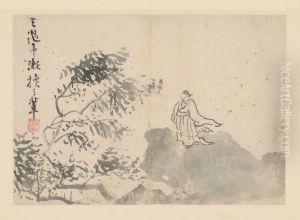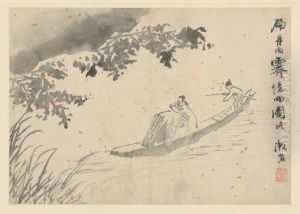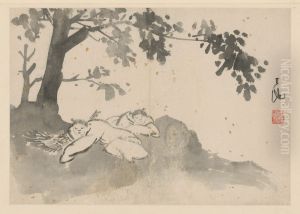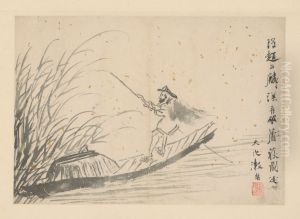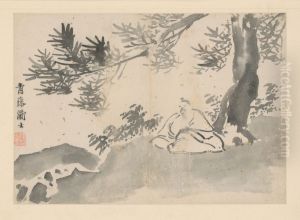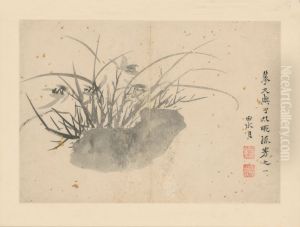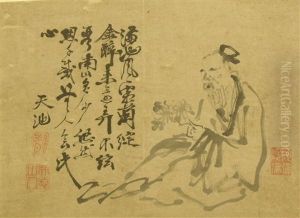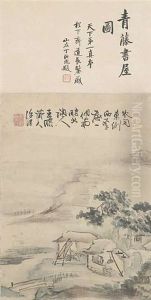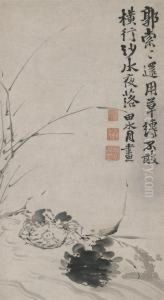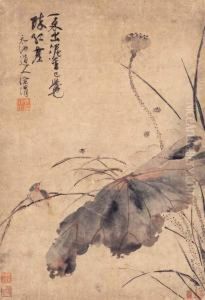Xu Wei Paintings
Xu Wei was a Chinese Ming dynasty painter, poet, writer, and dramatist famed for his artistic and cultural contributions. Born in Shanyin (now Shaoxing), Zhejiang province, Xu Wei manifested a deep interest in literature and painting from an early age. Despite his humble origins, his talents in the arts set him apart. However, his life was marked by personal tragedies and professional setbacks. He failed the imperial examinations several times, which was a significant source of social mobility and prestige in his era, and he struggled with mental health issues, reportedly attempting suicide on several occasions.
His artistic style was unconventional and ahead of his time, characterized by a free and expressive technique that was not widely appreciated by his contemporaries, who favored more restrained and meticulous approaches. Xu Wei's paintings often featured bold brush strokes and a dynamic use of ink, which later came to be appreciated as early examples of a more modern, expressionistic style. He was particularly adept at painting flowers, birds, and landscapes, and his innovative methods had a lasting influence on the development of the 'literati painting' (wenren hua), a style associated with the scholarly class that emerged more prominently in the later Ming and Qing dynasties.
In addition to his visual art, Xu Wei was a prolific writer, producing works of poetry, drama, and essays. His plays are considered some of the earliest examples of Chinese huaju, a genre of spoken drama that contrasts with the traditional musical drama. His personal struggles, combined with his expressive creativity, made him a compelling figure in Chinese cultural history. Xu Wei's legacy endured, and by the 20th century, he was celebrated as a pioneer of artistic expression in China. His work has since been re-evaluated and is highly regarded for its emotional depth and innovative style.



